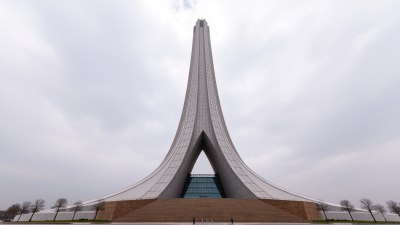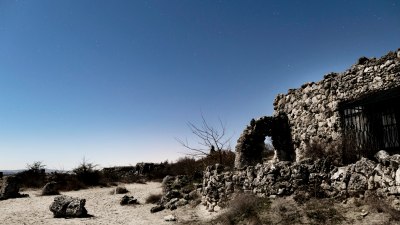The Azadi Tower in Iran Feels Like an Unfinished Sentence
Explore the architectural significance and cultural impact of Iran's Azadi Tower.

Image created with Flux Schnell
The Azadi Tower, an iconic symbol of Tehran, stands as a profound reflection of Iran's rich history and its aspirations. This architectural marvel, known historically as the Shahyad Tower, was completed in 1971 to commemorate the 2,500th anniversary of the Persian Empire. Yet, beyond its monumental structure, it conveys a sense of an unfinished narrative, encapsulating the complexities of a nation caught between tradition and modernity.
Architectural Design
The design of the Azadi Tower was conceived by the Iranian architect Hossein Amanat, who drew inspiration from various elements of Persian architecture. The tower rises to a height of 50 meters, with a base made of white marble, representing purity and integrity. Its unique structure features a series of arches that symbolize the gateway to the freedom of significance. The base is adorned with intricate motifs that narrate Iran's historical legacy, blending modernism with classical Persian aesthetics.
Cultural Significance
The Azadi Tower is not merely an architectural feat; it represents the collective identity of a nation. The structure reflects the duality of Iran's cultural heritage—on one side, it embraces the glorious past of the Persian Empire, while on the other, it symbolizes the aspirations for a democratic and free future. Throughout the years, the tower has become a gathering point for protests and celebrations alike, making it a tangible expression of the Iranian spirit.
Historical Context
Built during a tumultuous period in Iran's history, the Azadi Tower witnessed the revolutionary dynamics of the late 20th century. Its establishment coincided with the end of the Pahlavi dynasty, making it a monument both of celebration and of dissent. The tower's name change from Shahyad to Azadi was emblematic of the nation's desire to break from monarchical ties and craft its own narrative. However, this signified a transition that remains filled with challenges and conflicts, evoking the sensation of an ‘unfinished sentence’ in the context of Iranian identity.
Symbol of Resistance and Unity
Throughout its existence, the Azadi Tower has stood tall as a symbol of resistance and unity among the Iranian populace. It has served as a backdrop for numerous social movements, from protests advocating for political reform to celebrations of national pride. In 1979, the tower became a central stage during the Iranian Revolution, signifying the people's will to alter their fate. The evolution of the tower's role over the decades has rendered it a permanent fixture in the collective memory of Iranians, representing their ongoing quest for identity and self-expression.
Architectural Challenges and Preservation
Despite its grandeur, the Azadi Tower faces numerous challenges, particularly regarding preservation and maintenance. Natural environmental factors, pollution, and urban expansion have taken a toll on the structure, prompting discussions about restoration efforts. Preserving such a significant historical monument is crucial, not just for Iran but for the preservation of global cultural heritage. The dynamic between maintaining its original essence and adapting to contemporary needs reflects the ongoing struggle to balance tradition with progress.
Tourism and Global Perception
As a premier tourist attraction in Tehran, the Azadi Tower draws visitors from around the globe. It provides a vital glimpse into Iran's past and present, allowing tourists to engage with the country's rich culture and turbulent history. However, the perception of the tower varies significantly in different global contexts. It stands as a powerful reminder of the struggles faced by the Iranian people, serving both as a point of interest and a subject of debate regarding Iran’s political landscape.
The Tower in Art and Literature
The Azadi Tower has transcended its physical presence to inspire various forms of art and literature. Poets and writers have depicted it as a symbol of hope and resilience, while artists have captured its beauty in paintings and sculptures. The tower's multifaceted representation in creative expressions portrays the complex relationship Iranians have with their land and heritage. It acts as a muse for contemporary artists seeking to explore themes of identity, freedom, and the nuances of cultural memory.
Modern-Day Relevance
In modern-day Iran, the Azadi Tower maintains its relevance as a symbol of the ongoing discussions surrounding national identity, freedom, and the youth's aspirations. The contemporary generation grapples with the legacy of their past while navigating a future that intertwines both traditional values and modern aspirations. The tower is emblematic of a narrative that is still being written, a testament to the resilience and hopes of the Iranian people.
The Azadi Tower stands as a powerful archetype of a nation's unfinished sentence, encompassing the story of Iran—the highs and lows, the struggles, and the aspirations. It represents more than just a pivotal architectural achievement; it embodies the spirit of a people continuously searching for identity and freedom. The tower invites reflection, serving as a poignant reminder of the complexities shaped by history, ideology, and the unending quest for a narrative that is uniquely its own.











